- Home
- Prelims
- Mains
- Current Affairs
- Study Materials
- Test Series
Dec 24, 2021
HC ISSUES DIRECTIONS FOR STREAMLINING JUVENILE JUSTICE DELIVERY SYSTEM
Delhi High Court has passed directions to streamline the functioning of juvenile justice delivery system.
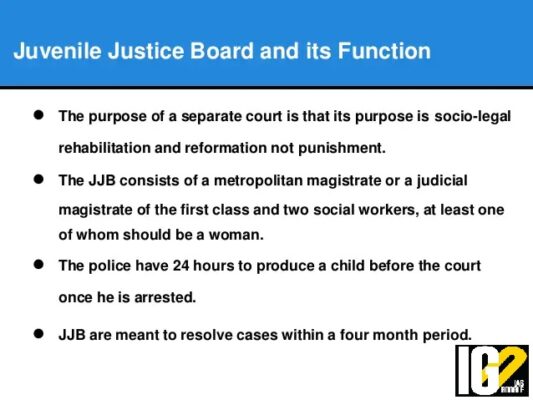 Highlights of order
Highlights of order
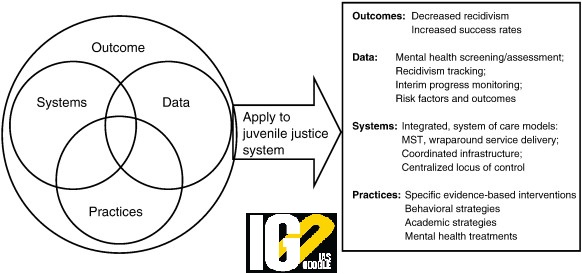
 New guidelines:
New guidelines:
 What is anti-dumping duty?
What is anti-dumping duty?
 Key findings of the report:
Key findings of the report:
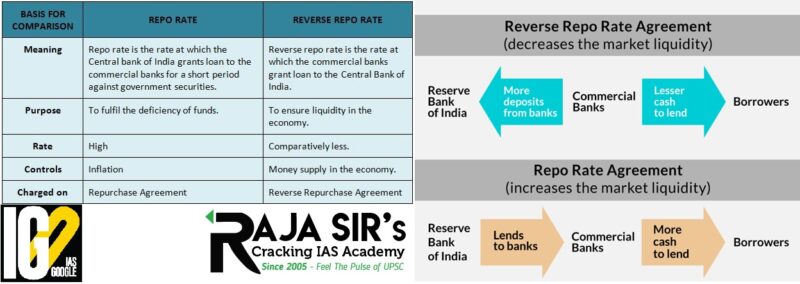 What is Repo rate?
What is Repo rate?
 Open Acreage Licensing Program (OALP):
Open Acreage Licensing Program (OALP):
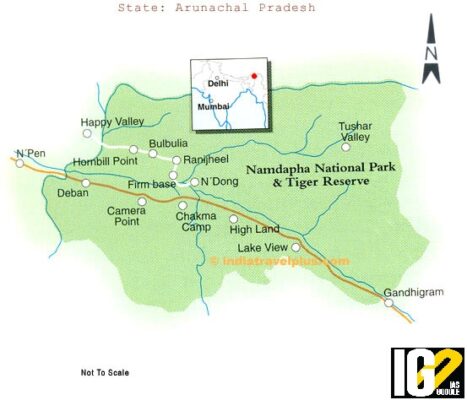 Objectives:
Objectives:
 Highlights
Highlights
 Highlights:
Highlights:
 Microplastics?
Microplastics?
 Sri Aurobindo (15 August 1872 - 5 December 1950)
Sri Aurobindo (15 August 1872 - 5 December 1950)

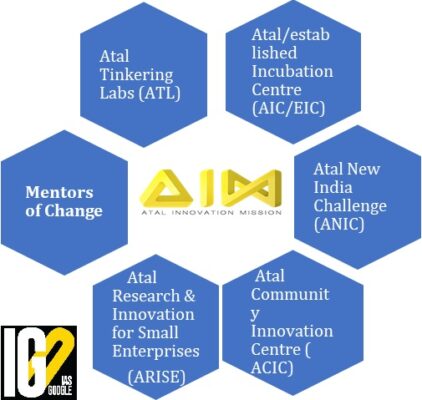


 Highlights of order
Highlights of order

- Quarterly review of the progress of the Individual Care Plan (ICP) and rehabilitation card of children in conflict with law must be carried out by the Juvenile Justice Board (JJB).
- Under Juvenile Justice (Care and Protection of Children) Model Rules, 2016, the Rehabilitation-cum-Placement Officer is required to draw up a rehabilitation card.
- JJB is mandated to monitor the progress of the child based on the ICP and the card.
- All JJBs must ensure post-release plan.
- It is required to be drawn up two months before a child is due to leave a child care institution.
- The Juvenile Justice Board is an institutional body constituted under Section 4 of the JJ Act, 2015.
- It has been included in the State List (List II, Schedule VII).
- one or more than one Juvenile Justice Board(s) are established by the State Government for each district.
- Metropolitan Magistrate or Judicial Magistrate First Class.
- Two social workers (one being a woman).
- The Bench shall have all the powers conferred by the Code of Criminal Procedure, 1973on a Metropolitan Magistrate or a Judicial Magistrate First Class.
- The Board constituted for any district shall have the power to deal exclusively with the proceedings under the Act:
- In the area of jurisdiction of the Board.
- In matters relating to children in conflict with the law.
- Board is empowered to inquire into heinous offences related to child.
- Ensuring informed participation of the child & the parent or the guardian throughout the process.
- Ensuring protection of the child’s rights throughout the process of arresting the child, inquiry, aftercare and rehabilitation.
- Ensuring the availability of legal aid for the child through various legal services institutions.
- Providing a qualified interpreter or translator to the child if he/she fails to understand the language during the course of proceedings.
- Ordering the police for registration of FIR if any offence is committed against any child in conflict with the law.
- Conducting a regular inspection of jails meant for adults, to check if any child is lodged in such jails.
- Taking immediate measures for the transfer of a child found in jails for adults, to an observation home.
- Conducting inquiry for declaring that a certain person is fit for taking care of the child in conflict with the law.
 New guidelines:
New guidelines:
- Provisions of the erstwhile Tariff Authority for Major Ports (TAMP) will be abolished.
- The concessionaires at major ports will be allowed to set tariffs as per market dynamics.
- The royalty payable for trans-shipment cargo will now be 1.0 times (from 1.5 times earlier) the normal container.
- The concessionaire has to pay only 40 per cent of the royalty payable for foreign cargo (from 60 per cent earlier).
- Ports in India are classified as Major and Minor Ports according to the jurisdiction.
- Major Ports are owned and managed by the Central Government and Minor ports are owned and managed by the State Governments.
- Major Ports are under the Union list of the Indian Constitution.
- They are administered under the Indian Ports Act 1908and the Major Port Trust Act, 1963.
- Each major port is governed by a Board of Trustees appointed by the Government of India.
- The Trusts operate on the basis of policy directives and orders from the Government of India.
- Their functions include planning, management and operations of ports.
- The tariffs for major ports are fixed by the Tariff Authority for Major Ports (TAMP).
- Minor operates are managed at the State level by the department in charge of ports or the State Maritime Board, if created, as is the case in Gujarat, Maharashtra and Tamil Nadu.
- The functions of the State maritime boards are similar to those of port trusts, and also include the authority to set tariffs.
- They also focus on attracting private investment by awarding concession contracts, providing incentives, exclusivity rights and assuring land acquisition.
 What is anti-dumping duty?
What is anti-dumping duty?
- An anti-dumping duty is a protectionist tariff that a domestic government imposes on imports that it believes are priced below fair market value.
- To protect their respective economy, many countries impose duties on products they believe are being dumped in their national market.
- It is done with the rationale that these products have the potential to undercut local businesses and the local economy.
- Dumping is a process wherein a company exports a product at a price that is significantly lower than the price it normally charges in its home (or its domestic) market.
- Example: If India started selling apples to the US for less than what they're worth in the US, then US apple producers would have a hard time selling their products to the domestic market.
- Anti-dumping duties intend to save domestic jobs, these tariffs can also lead to higher prices for domestic consumers.
- Anti-dumping duties can reduce the international competition of domestic companies producing similar goods.
- Hydrofluorocarbons (HFCs) are a group of industrial chemicals primarily used for cooling and refrigeration.
- HFCs were developed to replace stratospheric ozone-depleting substances that are currently being phased out under the Montreal Protocol on Substances that Deplete the Ozone Layer.
- HFCs currently represent around 1% of total greenhouse gases.
- Its impact on global warming can be hundreds to thousands of times greater than that of carbon dioxide per unit of mass.
- HFC’s can be most effectively controlled through a phase-down of their production and consumption.
- Global HFC phase-down could also provide indirect benefits through improvements in the energy efficiency of the refrigerators, air conditioners, and equipment that use these chemicals.
 Key findings of the report:
Key findings of the report:
- Indian Railways has the worst operating ratio in the past 10 years and its revenue surplus has decreased by more than 66%.
- The operating ratio deteriorated from 97.29 % in 2018-19 to 98.36 % in 2019-20.
- Operating Ratio (OR) represents the ratio of working expenses to traffic earnings.
- A higher ratio indicates poorer ability to generate surplus.
- It could not achieve the revised estimate target of the receipts.
- The total receipts decreased by 8.30% during 2019-20 as compared to the previous year.
- There was heavy dependence on transportation of coal which constituted around 49% of the total freight earnings during 2019-20.
- The Indian railways needs to revisit the passenger and coaching tariffs.
- This is done so as to recover the cost of operations and reduce losses in its core activities.
 What is Repo rate?
What is Repo rate?
- REPO rate is the rate of interest at which the Reserve Bank of India (RBI), lends money to the commercial banks.
- In case of a financial crisis, the commercial banks can lend money from the Reserve Bank of India.
- Repo rate is used by the central bank to control the money supply in the market
- This helps in controlling inflation and helps regulate the economy.
- The rates are decided by the central bank on the basis of the inflation or recession in the market of the country.
- Reverse repo rate is the interest offered by the RBI to banks who deposit funds into the treasury.
- When banks generate excess funds, they may deposit the money in the central bank.
- A high reverse repo rate helps inject liquidity into the economic system.
- It is the rate at which RBI takes money from banks.
- A part of it is done at a fixed rate and some of it at a variable rate.
- The reverse repo rate has an impact on the economy.
- When the reverse repo rate is increased banks deposit their surplus funds with RBI in order to gain interest.
- The economy experiences reduced money flow and the banks find it more feasible to deposit the money in the central bank.
- The RBI is conducting VRR auction as a primary tool for market liquidity absorption.
- During variable rate reverse repo auctions, banks lend their excess liquid reserves to the central bank, getting between 3.8-3.9 percent interest.
- Previously, the general period for VRRRs has either been 7, 14 or 28 days.
- In 2020, to keep liquidity easy in the market, RBI sought to increase the liquidity in the system by printing more money.
- In the early 2021, banks have been depositing money with the RBI through the fixed rate reverse repo window earning 3.35 %.
- The VRRR can be regarded as RBI’s move to force banks to move from the fixed rate of 3.35 percent to the VRRR window.
- In 2019 Central Government amended the revenue-sharing model for hydrocarbon exploration and capped the government’s revenue share at 50%.
 Open Acreage Licensing Program (OALP):
Open Acreage Licensing Program (OALP):
- Under Hydrocarbon Exploration & Licensing Policy (HELP), OALP mechanism was launched by the Ministry of Petroleum and Natural Gas.
- Aim: Allow investors to carve out blocks of their choice by assessing exploration and production (E&P) data and by submitting an Expression of Interest (EoI).
- EOI can be submitted throughout the year without waiting for a formal bid round from the government.
- These blocks are subsequently offered through biannual formal bidding process.
- HELP is a step towards improving the ‘Ease of Doing Business’ in the Indian Exploration and Production (E&P) sector.
- It was launched in 2016 and replaced New Exploration Licensing Policy (NELP).
- Reduced royalty rates, no oil cess, marketing and pricing freedom.
- Freedom to investors for carving out blocks of their interest.
- A single license to cover both conventional and unconventional hydrocarbon resources.
- Exploration permission during the entire contract period.
- Easy, transparent, swift bidding and awarding process.
 Objectives:
Objectives:
- To boost the sale of locally produced goods of the community-based organizations (CBO) members,
- To improve the socio-economic condition of the rural populace
- To generate sustainable employment opportunities.
- Location- Changlang district, Arunachal Pradesh, India.
- It shares international border between India and Myanmar.
- It lies close to the Indo-Myanmar-China tri-junction.
- It is located between the Dapha bum range of the Mishmi Hills and the Patkai range.
- It is a biodiversity hotspot in the Eastern Himalayas.
- It is the fourth largest national park in India.
- Its name is a combination of two Singpho words "nam" means water and "dapha" means origin (river which originates from Dapha Bum glaciers.)
- It rises from 200 metres to 4,500 metres in the snow-capped mountains.
- It is crossed from east to west by the Noa Dihing River that originates at the Chaukan Pass.
- Wildlife Sanctuary-1972
- National Park and Tiger Reserve- 1983
- Tropical evergreen forest, temperate broadleaf and mixed forest.
- The park has extensive bamboo forests.
- There are more than 1,000 floral species and most of them are rare, endangered or endemic.
- Sapria himalayana and Balanophora are root parasites related to Rafflesia are found here.
- Some species, such as Pinus merkusii (Sumatran pine) and Abies delavayi (Delavay’s Fir) are found nowhere else in India.
- It is only park in the World to have the four Feline species of big cats-
- Tiger (Panthera Tigris)
- Leopard (Panthera Pardus)
- Snow Leopard (Panthera Uncia)
- Clouded Leopard (Neofelis Nebulosa)
- Around 96 mammal species are found here out of which 29 species are listed on Schedule I of the Wildlife (Protection) Act, 1972.
- Major species-Flying Squirrel, Marbled Cat, Spotted Linasang, Civets, Deer, Takin, Bamboo Rats, Hog Badge
- The region is very rich in Lepidoptera species.
- It Includes Butterflies and moths.
- It also has the largest population of Hoolock Gibbons in India Forests.
 Highlights
Highlights
- India lost 04 million hectares (mha) crop area to cyclonic storm, flash floods, floods, landslides and cloudbursts in 2021.
- In 2021, Cyclone Tauktae and Cyclone Yaas wreaked in several states such as Odisha, West Bengal and Karnataka.
- In July, floods in Maharashtra damaged standing crops.
- In November, rainfall caused huge loss of life and property in south Indian states of Andhra Pradesh, Tamil Nadu, Kerala, and Karnataka.
- In 2020, huge swarms of locusts ate away standing crops in states like Rajasthan and Madhya Pradesh.
- The average food prices (after adjusting for inflation) in the 11 months of 2021 are the highest in 46 years.
- There should be integration with the programmes undertaken by different ministries, sectors and global processes.
- The risk management measures have to be holistic and must provide social protection for all citizens, especially the poor and vulnerable.
- A task forces for vulnerability assessment, planning and monitoring for income generation, agriculture, water management should be created to tackle climate change.
- Investing in integrated farming systems practiced by small farmers, will promote food security as well as help absorb climate shocks and seasonal stresses.
- Need informed participation and women's leadership in the decentralised and inclusive governance system.
 Highlights:
Highlights:
- Scientists sampled air 2,877 meters above sea level. The study found that all samples contained microplastics.
- The particles were able to travel such distances because they were able to reach great altitudes.
- The study found Microplastic in the Mediterranean Sea and the Atlantic Ocean.
 Microplastics?
Microplastics?
- Microplastics are small pieces of plastic, less than 5 mm in length, that occur in the environment as a consequence of plastic pollution.
- They are present in a variety of products from cosmetics to synthetic clothing to plastic bags and bottles.
- Many of these products readily enter the environment in wastes.
- Microplastics consist of carbon and hydrogen atoms bound together in polymer chains.
- Other chemicals such as phthalates, polybrominated diphenyl ethers are also present in microplastics.
- Examples: Microbeads found in personal care products, plastic pellets used in industrial manufacturing, and plastic fibers used in synthetic textiles.
- Secondary microplastics form due to the breakdown of larger plastics.
- This happens when larger plastics undergo weathering through exposure to wave action, wind abrasion, and ultraviolet radiation from sunlight.
- Microplastics are not biodegradable.
- In oceans alone, annual plastic pollution from all types of plastics was 4 million to 14 million tons in the early 21st century.
- Microplastics are a source of air pollution, occurring in dust and airborne fibrous particles.
- They have been found lodged in the digestive tracts and tissues of various invertebrate sea animals
- Fish and birds are likely to ingest microplastics floating on the water surface.
- The ingestion can cause aquatic species to have less energy to carry out life functions, leading to neurological and reproductive toxicity.
- They have been detected in drinking water and food products, including seafood and table salt.
- Scientists have also detected microplastics in human tissues and organs.
- United Nations Environmental Programme engaged more than 100 countries in educational campaigns to reduce harmful impacts of microplastics.
- Aim: Raising awareness of plastics pollution and encouraging reuse and recycling of plastics.
- The European Commission has launched an initiative that aims to tackle microplastics unintentionally released into the environment.
- It will focus on labelling, standardization, certification and regulatory measures for the main sources of these plastics.
- In 2015 the United States passed the Microbead-Free Waters Act, which prohibits the manufacture and distribution of rinse-off cosmetics products that contain plastic microbeads.
 Sri Aurobindo (15 August 1872 - 5 December 1950)
Sri Aurobindo (15 August 1872 - 5 December 1950)
- Sri Aurobindo was an Indian social political and spiritual philosopher, yoga guru, poet, and Indian nationalist ideologue.
- When he was seven years old, Aurobindo was sent to England with his brothers for education.
- He studied under the W H Drewett in Manchester, where he learned Latin, Greek, German, Italian, French, Arithmetic, and Geography.
- His father wanted him to participate in the administrative service competition and serve the government in a higher position.
- He joined the Indian movement for independence from British colonial rule.
- Until 1910, he was one of its influential leaders and then became a spiritual reformer, introducing his visions on human progress and spiritual evolution.
- From 1908 to 1909, he was imprisoned by the British government. There, he studied Indian philosophy and
- Aurobindo was also a journalist and his first philosophical magazine called Arya was published in 1914.
- He also published a weekly newspaper named Vande Mataram, which got him enormous fame.
- His work got him nominated for the Nobel Prize in Literature in 1943 and was also nominated in 1950 for the Nobel Prize for Peace.

- The book includes spices statistics like, area, production, productivity, export, import, price and value of output of various spices produced in the country.
- Published by: Directorate of Arecanut and Spices Development (DASD), Ministry of Agriculture & Farmers Welfare.
- Spices production in the country grew with an annual growth rate 7.9%, since 2014-15.
- Spices exports contribute to 41% of the total export earnings from all horticultural crops.
- It ranks fourth among agricultural commodities after only marine products, non-basmati rice and basmati rice.
- Aim: To assess overall security architecture to provide support during an emergent situation at Offshore Development Area (ODA) and for the Oil Operators to validate their Standard Operating Procedures.
- It is a biannual exercise.
- The exercise focused on contingencies such as terrorist intrusion, bomb explosion, major fire, oil spill, man overboard, casualty evacuation, loss of control of the vessel, and mass evacuation.

- Aim: To enable innovators and entrepreneurs in India to have access to the innovation ecosystem in 22 scheduled languages by the Government of India.
- To build the capacity for the VIP, AIM will be training a Vernacular Task Force (VTF) in each of the 22 scheduled languages.
- Each task force comprises of vernacular language teachers, subject experts, technical writers, and the leadership of regional Atal Incubation Centers (AICs).
- This would assist India in building a strong local network of design experts and innovation practitioners.

- The fossil was discovered in Ganzhou, southern China and belonged to a toothless theropod dinosaur or oviraptorosaur.
- Oviraptorosaurs, which means egg thief lizards were feathered dinosaurs that lived in what is now Asia and North America during the Late cretaceous period.
- They had variable beak shapes and diets.
- It size ranged from modern turkeys at the lower end to massive Gigantoraptors, that were eight meters (26 feet) long.

- It is an indigenously developed new generation surface-to-surface missile
- Range: 150-500 kilometers.
- It can be launched from a mobile launcher.
- The missile guidance system includes state-of-the-art navigation system and integrated avionics.
- It would reach the designated target with high degree accuracy, control, guidance and mission algorithms.
- It is powered with solid propellant rocket motor.









 Latest News
Latest News
 General Studies
General Studies